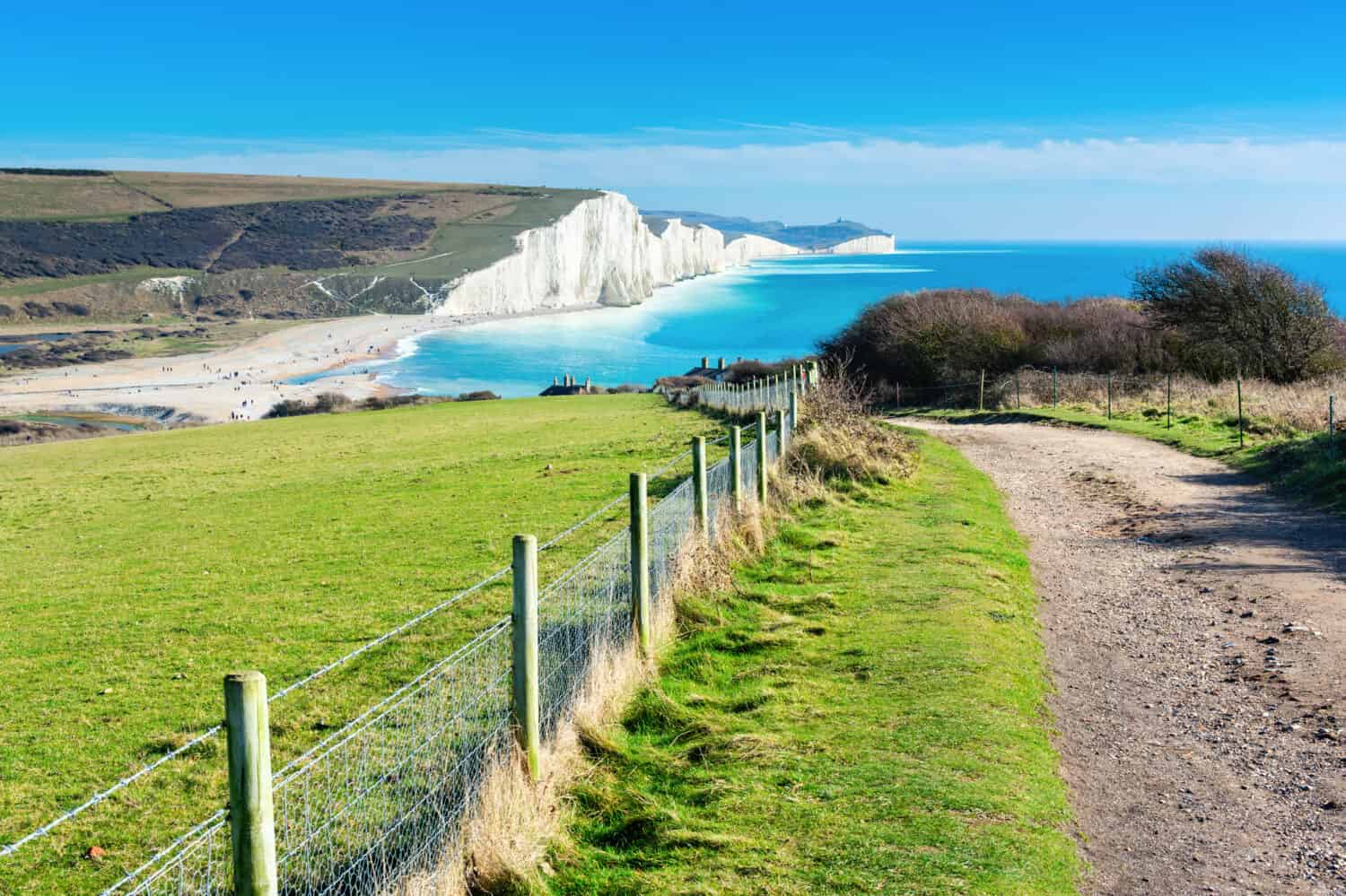England is known for its variable weather. You can start the day in shorts but require a raincoat just a few hours later! These changeable conditions are why it’s such a common conversation subject. If you’re ever lost for words in England, just ask for tomorrow’s weather forecast. It guarantees enthusiastic conversation. However, if it’s the English sun you’re looking for, we have you covered. These are officially the ten sunniest places in England — just be sure to pack a raincoat alongside the sunblock!

Why Is England’s Weather so Changeable?
Sun one minute, then rain the next. Why?
It’s because England is situated on the Atlantic Ocean’s westerly wind belt, but it’s also close to mainland Europe. England’s topography is regionally varied, and its land use changes from mile to mile. On top of this, England’s long coastline throws in fast changes. This means England gets its fair share of sun, wind, rain, and cloud, sometimes all in one day.
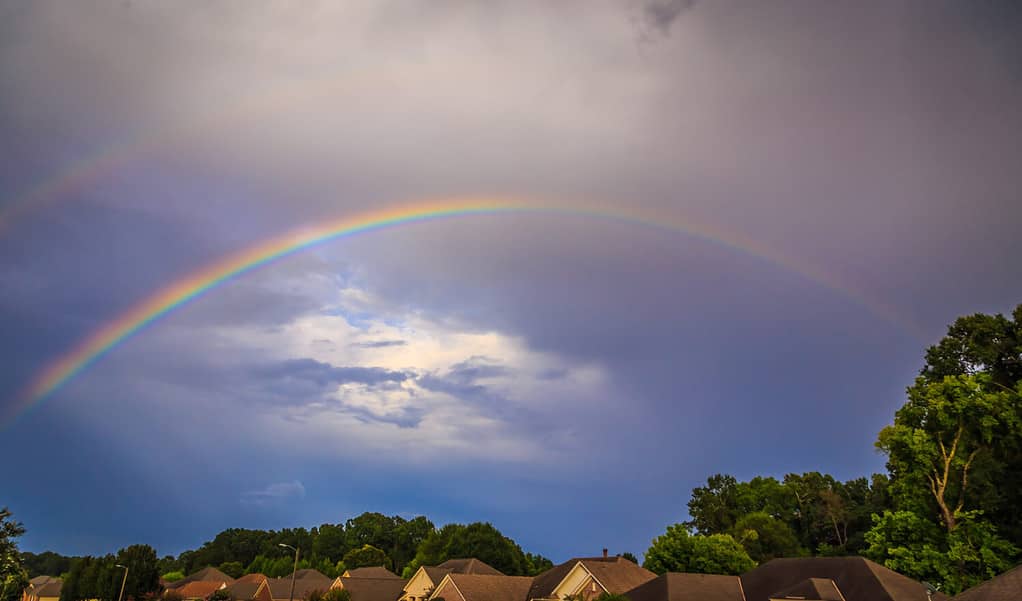
England’s weather is changeable due to its long coastline and the Atlantic Ocean wind belt.
©Mccallk69/Shutterstock.com
According to the Met Office, the sunniest places in England lie on the south coast. Let’s take a look.
1. Isle of Wight
The Isle of Wight is officially the sunniest place in England, according to the Met Office. Shanklin and Ventor towns are two of the sunniest spots situated on its sheltered south coast. They’re seaside towns full of thatched cottages and a popular holiday destination due to their beautiful sunshine. This pretty town receives an average of 1,923 hours of sunshine every year.
The Isle of Wight is an English island destination that lies just a few miles off the coast of Hampshire, just across the Solent. Although it’s only 20 miles wide, it’s England’s largest island with 100 feet high cliffs, golden sandy bays, and 57 miles of coastline. Queen Victoria moved here when Prince Albert died, and visitors can walk around her Italian-style villa.

The Isle of Wight is one of the sunniest places in England according to the Met Office.
©William Paul Murphy/Shutterstock.com
2. Bognor Regis
Bognor Regis in West Sussex receives over 1,920 hours of sunshine every year along its miles of shingle beach. Situated on England’s south coast and just 56 miles southwest of London, this is another popular holiday resort. Its coastal position maintains plenty of sunshine and also prevents extreme freezing temperatures. According to the Met Office, the temperature hasn’t fallen below minus 9.4 degrees centigrade since 1960.
Did you know the suffix Regis means ‘of the King’? It was added to plain old Bognor when King George V (King Charles III’s great-grandad) chose it to recover from lung surgery in 1929.
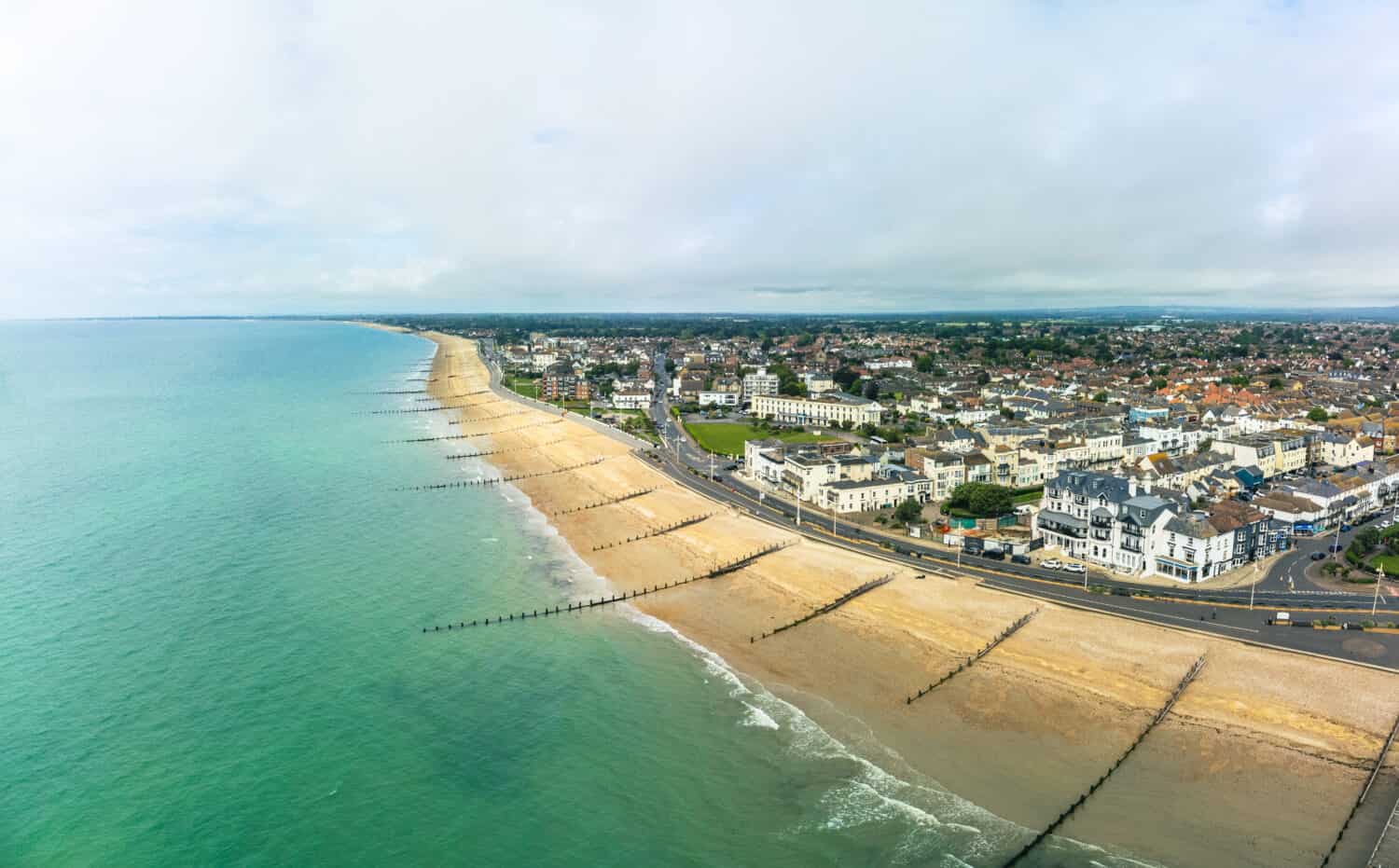
Bognor gets the suffix “Regis,” which means “of the king,” from hosting convalescing King George V in 1929.
©Martin Valigursky/Shutterstock.com
3. Bournemouth
Bournemouth is a lively tourist destination that’s 94 miles south of London. It’s one of the sunniest places in England, with numerous beaches covered in golden sand and clean, life-guarded water in the summer months.
Over 200 years ago, Bournemouth Beach had barely any infrastructure, just a lone summerhouse an army officer called Louis Tregonwell had constructed. In 1800 the train line arrived in sunny Bournemouth, and it became an official town. The sunny seafront became fortified against invasion in WW2, but nowadays, you spot sunbathers, surfers, and university students enjoying the sun.
Its sunny skies are due to the temperate oceanic climate there. As with most of England, the warmest months are July and August. Bournemouth has good news for winter visitors too. Its average rainfall is 34.4 inches, below the 45.8-inch national average.
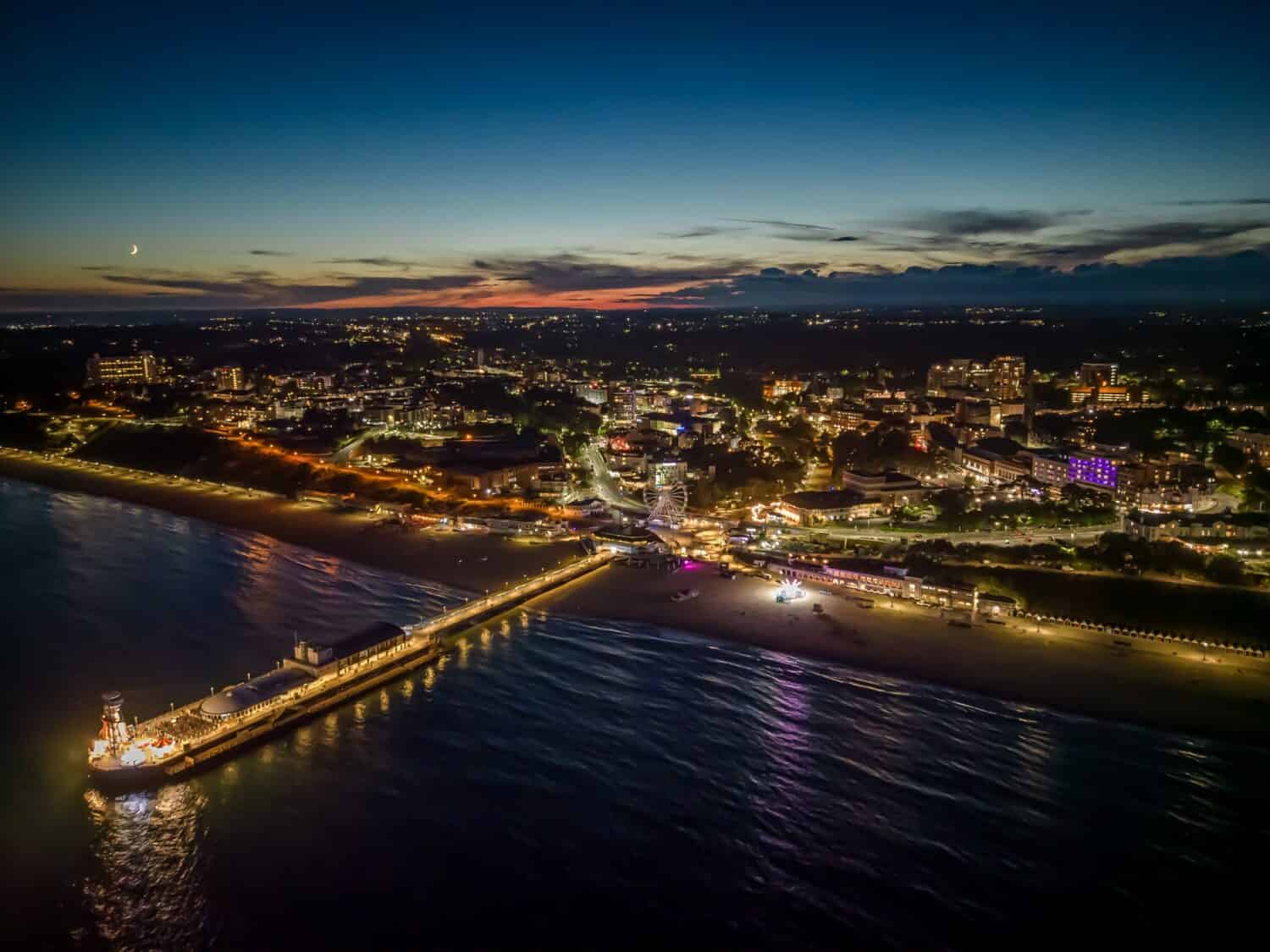
Bournemouth is home to miles of golden beaches and lively nightlife.
©Jan-Erik Paul/Shutterstock.com
4. Eastbourne
The coastal town of Eastbourne in East Sussex boasts not only 1,892 hours of sunshine but epic sandy beaches and a view of the Seven Sisters cliff formation to die for. The highest chalk cliff in England lies just to the west. No, it’s not the white cliffs of Dover, but Beachy Head. Constant cliff erosion keeps the cliffs pearly white.
Eastbourne lies 54 miles south of London, and Victorian-era hotels line the seafront, but humans have taken advantage of Eastbourne’s warm summers and mild winters since the Stone Age. During July, the temperature hasn’t fallen below zero degrees centigrade since records began.

Seven Sisters cliff formation in Eastbourne remains white due to constant erosion.
©Pajor Pawel/Shutterstock.com
5. Brighton
Brighton, the most famous of all English holiday resorts, is one of the sunniest spots in England. It’s considered a hipster getaway now, but back in the Victorian era, sun-seeking tourists all but overwhelmed it in July and August.
Evidence of Victorian holidaymakers lies with the derelict west pier and art deco-style facades. Just 47 miles south of London, and just one hour on the train, makes Brighton a trendy extension of the capital.
Its temperate oceanic climate creates sunny summers and mild winters. Snow in any southern England seaside resort is almost unheard of, and because Brighton lies on the coast, it receives less rainfall than most of central and northern England. Just 29 inches a year on the seafront, and most of that falls in winter.
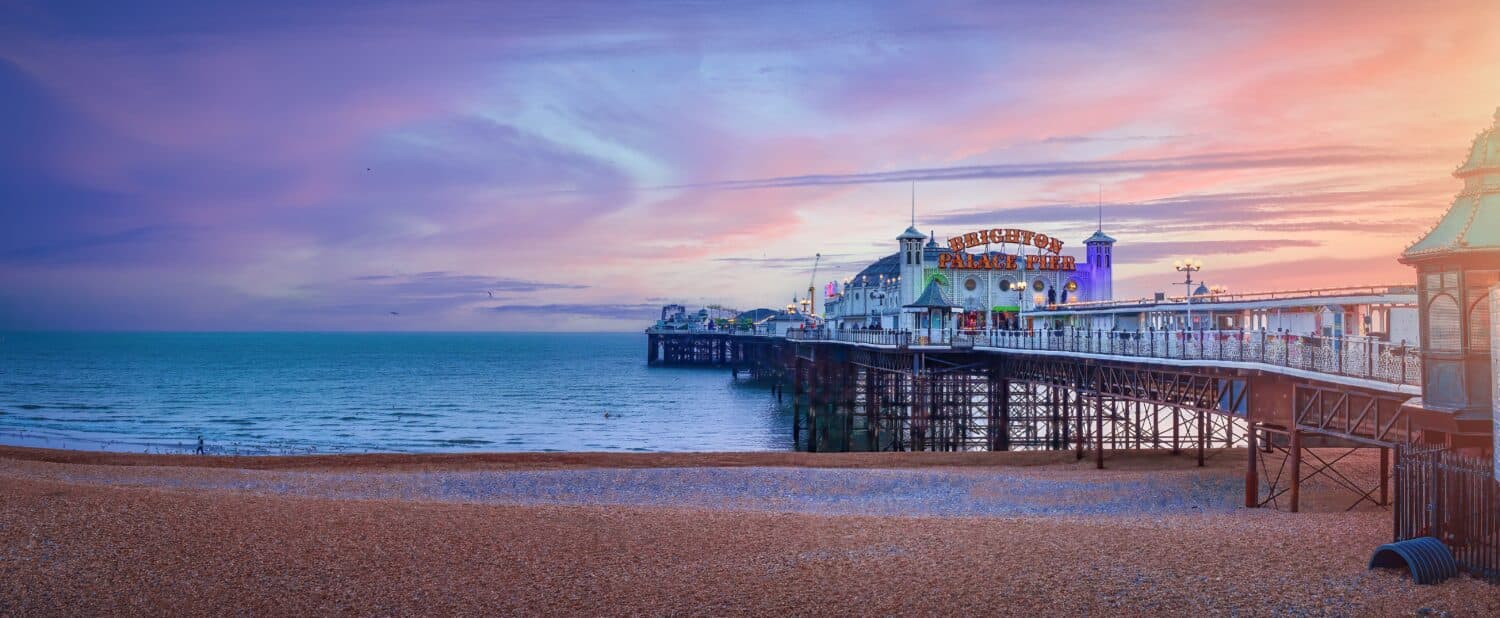
Trendy Brighton on England’s south coast is famous for its hipster crowd.
©Peppy Graphics/Shutterstock.com
6. Camber Sands
One of England’s largest sandy beaches is Camber Sands in East Sussex’s Camber Village near Rye. It’s a creamy-gold sandy beach with a harbor and nature reserve perfectly positioned to spot kingfishers, herons, and tufted ducks.
The hottest month is July, but August is the sunniest. November is the rainy period, and the beaches get extremely gusty. Strong winds are the reason this area is so popular with kite surfers and kite buggies. Not only is the beach huge, flat, and sandy the wind is powerful. The beach’s eastern end is designated to harness Camber Sands’ sun and forceful winds. Hold on tight!

Camber Sands near Rye is popular with kite surfers and kite buggies.
©Lilly Trott/Shutterstock.com
7. Margate
Margate in north Kent lies on England’s southeast coast and receives an average of 7.3 hours of sunlight a day. It enjoys the name “Sunny Margate” as a result of its sunny disposition. Like nearly all the sunny places in England, its climate is mild, and the town receives little rainfall compared to the rest of England. It’s reportedly the driest town in Kent.
It’s one of England’s sunniest places and full of history. The town was a major Middle Ages port. In the Victorian era, the city enjoyed a huge influx of holidaymakers traveling from London’s Thames River to enjoy the pleasant climate.

Margate in Kent, UK, was a major port during the Middle Ages.
©Christophe Cappelli/Shutterstock.com
8. Salcombe
Salcombe is a small, beautiful, and sunny town in southwest England’s glorious Devon County. The town sits on the edge of an estuary and welcomes thousands of holidaymakers in summer because it’s so sunny and warm. June is the sunniest month to enjoy Salcombe’s sheltered water and golden sandy beaches.
Several shipwrecks lie off the coast. The very oldest is the Bronze Age, plus one that sank in the 17th century full of gold coins. These days, Salcombe lifeboat station volunteers patrol the water. Salcombe’s had an incredible lifeboat presence here since 1869.
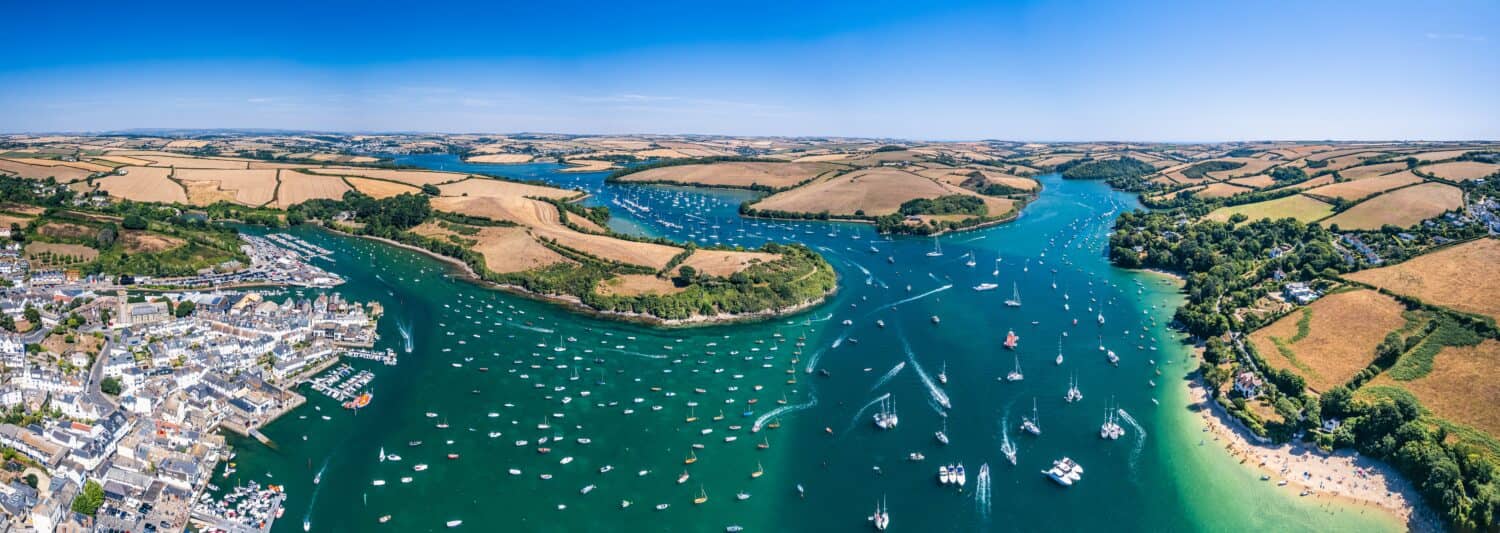
Salcombe in Devon sits on an estuary’s edge. Several ancient shipwrecks lie beneath its waters.
©Maciej Olszewski/Shutterstock.com
9. Torquay
Devon’s finest and one of the sunniest places in England, this Cornish seaside town is mild for most of the year. Its temperate oceanic climate means plenty of sunshine and warmer winters than most of England. It even boasts palm trees!
Torquay (pronounced “Tor-key”) is a gastronomic paradise for seafood lovers and a surfer’s dream. Historians love 1189 C.E. Torre Abbey, and picnickers enjoy space on Meadfoot, Babbacombe, and Watcombe’s rich golden beaches.

Devon’s Torquay is so sunny palm trees thrive there.
©KimberleyJane/Shutterstock.com
10. Scilly Isles
The Isles of Scilly (pronounced “silly”) is an archipelago off Cornwall County. It sits on the southwestern tip of the mainland. St Agnes Isle is Britain’s most southerly point.
The Scilly Isles enjoy mild temperatures and lots of sun. It’s a tempting place to visit, but it’s a journey because you have to take a series of small ferries between the five inhabited islands. The powder-soft beaches and bone-warming sun are worth it.
These gorgeous isles are a designated Area of Outstanding Natural Beauty. Animals you’ll see on these sunny isles include cute Atlantic seals and adorable puffins.

Puffins and Atlantic seals live around the five inhabited Scilly Isles.
©James LePage/Shutterstock.com
Where Are the Sunniest Places in England?
Most of England’s climate is temperate oceanic, but England’s sunniest places generally sit on the south or southeastern coast.
All of the above-listed sunny spots were popular tourist destinations in Victorian times due to their sunny reputation, and their mild temperatures continue to draw modern crowds throughout the year.
Summary of the 10 Sunniest Places in England
| Name | Location | Feature |
|---|---|---|
| Isle of Wight | Off the coast of Hampshire | The sunniest place in England. |
| Bognor Regis | West Sussex | Shingle beach. |
| Bournemouth | 94 miles south of London | Golden sands and little rain. |
| Eastbourne | East Sussex | View of the Seven Sisters cliff formation. |
| Brighton | 1 hour from London by train | Most famous. |
| Camber Sands | East Sussex | One of the largest beaches. |
| Margate | Southeast Coast | One of the sunniest and driest places. |
| Salcombe | Devon County, Southwest England | Several shipwrecks lie off the coast. |
| Torquay | Devon County | |
| Scilly Isles | Archipelago off Cornwall County at the southwestern tip of the mainland. | Powder-soft beaches; ferries between the 5 inhabited islands. |
Thank you for reading! Have some feedback for us? Contact the AZ Animals editorial team.

